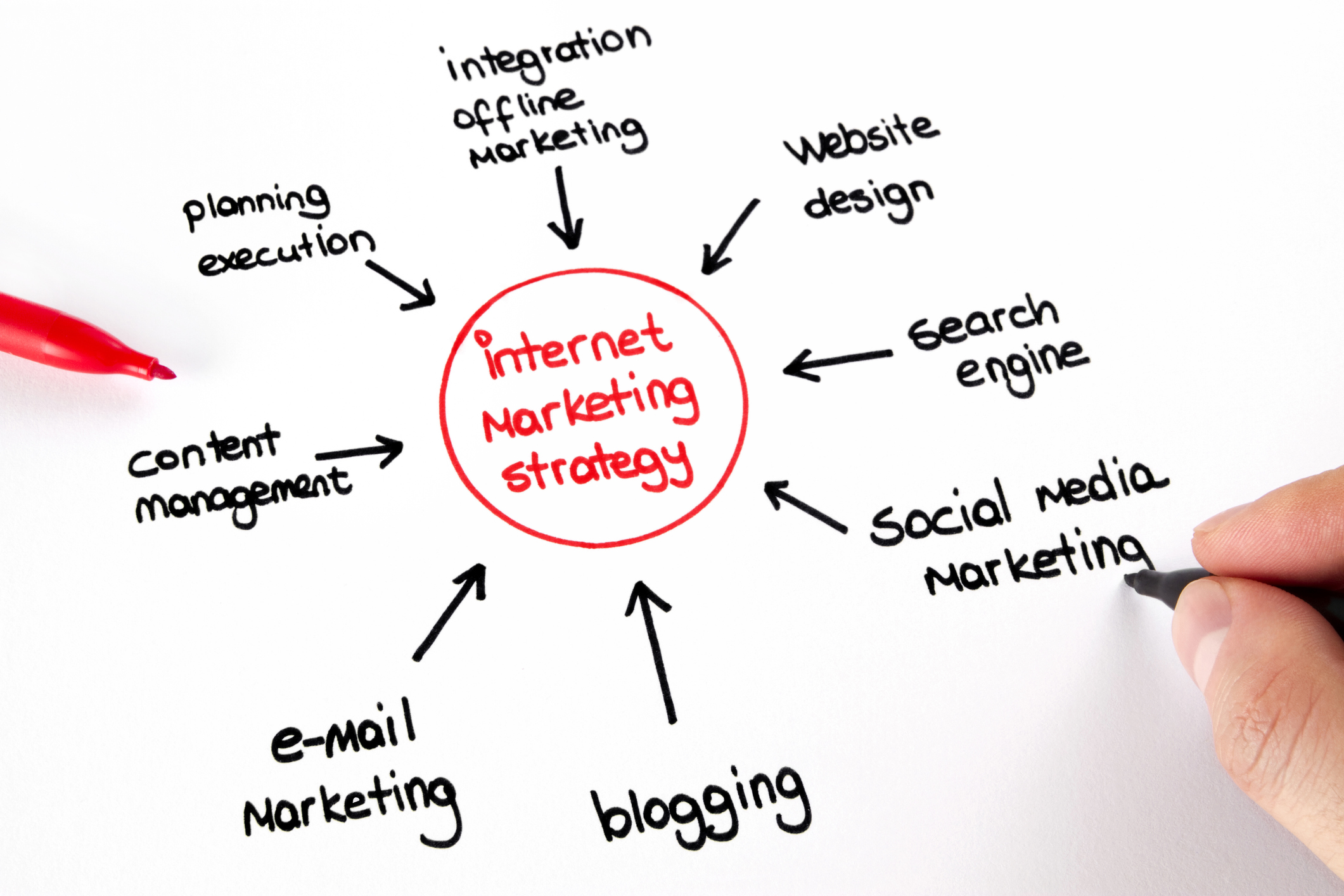2024 Digital Marketing Strategy Guide

Most of us would be lost without our smartphones, tablets, and computers.
People digest a lot of information on these devices, which is why a digital marketing strategy is imperative for any business owner. You want to catch customers where they are exploring search engines and perusing social media. Getting your marketing on these platforms will improve your conversion results, leading to more sales and revenue.

Understanding Digital Marketing Strategy
A digital marketing strategy is a plan that positions a product or brand in front of potential customers. The goal could be to grow the brand or achieve specific revenue targets. Digital marketing strategy operates exclusively on digital mediums such as search engines, websites, or social media. As a strategy, the campaign executes specific tactics to reach its objectives. One such tactic might be conducting social media ads targeting the demographic most interested in your product or service.
Importance of Digital Marketing Strategy
While you may understand the need for a marketing strategy, comprehending its importance is crucial. Here are some highlighted points to consider to help you devote the right time and energy to creating a strong digital marketing strategy.

Understanding Market Share
A clear strategy aids in understanding market share better. Without this insight, you may underestimate (or overestimate) the demand for your products or services. The strategy helps in fully understanding the marketplace, taking into account customer behaviors, needs, competitors, and customer profiles.
Competitors' Market Share
Without a digital marketing strategy, your competitors can utilize theirs to gain market share while you rely on traditional marketing tactics. Investing in digital marketing helps maintain visibility with your target audience and stay competitive.
Developing an Online Value Proposition
A digital marketing strategy assists in developing your online value proposition, enhancing the user experience when buying your product or service. This entails creating loyal customers who love your products and your brand.
Understanding Customer Behavior
Deploying user feedback tools helps in better understanding consumer sentiment around your products or services. This aids in streamlining marketing tactics and making adjustments to products and services to cater to the target market's needs.
Remaining Agile in a Competitive Market
Top brands constantly make adjustments to their brand and user experience, staying ahead of the competition by catering to consumer desires. Being dynamic and agile helps your business adapt to consumer needs.
Digital Marketing Strategy vs. Digital Marketing Campaign
Business owners often confuse strategy and campaign, using them interchangeably. While similar, a digital marketing strategy is distinct from a digital marketing campaign, though one is needed to have the other.
Digital Marketing Strategy
A digital marketing strategy is the plan for your marketing campaign. It considers demographics, product benefits, and platforms for success. It can have multiple digital marketing campaigns supporting it.
Digital Marketing Tactic
A tactic is the action taken to implement the digital marketing strategy. It is part of the campaign, taking specific actions to fulfill the strategy's goals.
Creating a Digital Marketing Strategy

Developing a meaningful strategy is critical to achieving your sales goals. Here are 10 steps to creating a digital marketing strategy:
Step 1: Define Customer Persona
Create an archetype of the perfect customer based on preferences, behaviors, and pain points.
Step 2: Set Clear Goals
Establish goals that support your business objectives and can be measured for progress and success.
Step 3: Develop Relevant Content
Customize content to meet strategy objectives, utilizing various formats like ad copy, blogs, and social media posts.
Step 4: Evaluate Existing Channels
Review current campaigns to refine or eliminate them based on performance.
Step 5: Implement Automation
Automate processes to streamline work, such as content generation and social media scheduling.
Step 6: Optimize for Mobile
Ensure digital campaigns are optimized for mobile consumption to enhance user experience and search ranking.
Step 7: Foster Easy Connection
Be responsive on social media and optimize landing pages for clear
CTAs to encourage sales.
Step 8: Choose Appropriate Technology
Utilize CRM systems, automation software, and AI technology to support digital marketing efforts efficiently.
Step 9: Highlight Unique Selling Proposition
Identify and incorporate your unique selling proposition into your marketing strategy to differentiate your brand.
Step 10: Track Progress
Establish a system to track campaign progress and adjust tactics as needed to achieve desired results.
Types of Digital Marketing Strategies
When crafting a digital marketing strategy, consider your goals, audience receptiveness, and budget. Here are five types of digital marketing strategies:
1. Content Marketing
Focuses on creating and distributing valuable content to attract and retain the target audience's interest.
2. Paid Advertising
Utilizes digital resources to specify target audiences for ads displayed on websites, search engines, or social media.
3. Email Marketing
Sends emails to convert subscribers into customers, utilizing opt-ins and segmentation for effective targeting.
4. Social Media Marketing
Promotes products and services on social media platforms through curated content to grow a loyal following.
5. Influencer Marketing
Leverages influencers' large social media followings to endorse products or services and increase brand visibility.
Conclusion
Developing an effective digital marketing strategy requires time and effort. Employ different tactics and campaigns aligned with your goals, measure success, and adapt as necessary. With a well-crafted strategy, businesses can enhance brand awareness and drive sales in the digital marketplace.
